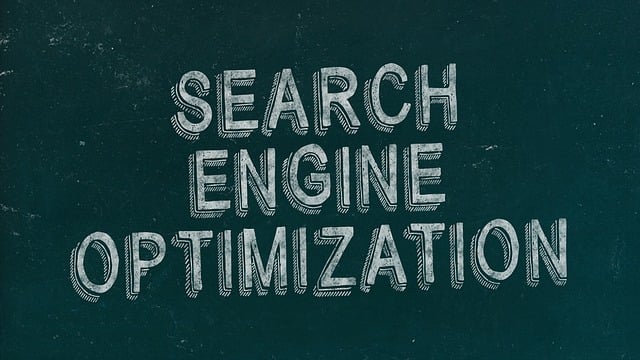AI-driven RPA (Robotic Process Automation) is transforming dining experiences by implementing intelligent climate control systems in restaurants. These systems optimize energy management through data analysis, user preference learning, and real-time adjustments to temperature, humidity, and air quality based on occupancy and guest needs. By automating tasks like temperature regulation and ventilation control, AI climate control enhances customer satisfaction, reduces operational costs, and improves food quality during peak hours, while also promoting sustainability. Despite challenges like data privacy concerns and ethical considerations, advancements in machine learning suggest a future where robots autonomously manage dining environments, integrating seamlessly with existing systems to elevate the overall dining experience.
“Welcome to the cutting edge of business transformation with Artificial Intelligence (AI) Robotic Process Automation (RPA). This technology is revolutionizing industries, and the dining sector is no exception. From optimizing AI climate control systems to enhancing operational efficiency, this article explores the multifaceted applications of AI-powered RPA. We’ll delve into its benefits, navigate potential challenges, and provide a future outlook on how AI climate control for dining environments is shaping the way we experience F&B operations.”
- Understanding AI Business Robotic Process Automation (RPA)
- AI Climate Control Applications in Dining Environments
- Benefits, Challenges, and Future Outlook of AI-Powered RPA in the Industry
Understanding AI Business Robotic Process Automation (RPA)

AI Business Robotic Process Automation (RPA) is a game-changer in modern business operations, offering efficient solutions to streamline repetitive tasks and enhance productivity. This technology mimics human actions by automating processes, from data entry to customer service interactions, using software robots or ‘bots’. By implementing RPA, businesses can achieve remarkable results, such as reduced operational costs, improved accuracy, and faster turnaround times.
In the context of AI climate control for dining environments, RPA can play a pivotal role in optimizing energy management. These intelligent systems can analyze patterns, adjust settings based on real-time data, and learn from user preferences, ensuring optimal comfort without excessive energy consumption. This not only creates a more pleasant dining experience but also contributes to sustainable practices, making it a powerful tool for businesses aiming to stay competitive and environmentally friendly.
AI Climate Control Applications in Dining Environments

In modern dining experiences, enhancing customer comfort through AI-driven climate control is becoming increasingly essential. This technology allows restaurants to automatically adjust temperature, humidity, and air quality based on real-time occupancy and guest preferences, creating an optimal environment for every patron. By leveraging machine learning algorithms, AI systems can predict and adapt to changes in weather conditions and kitchen activity, ensuring a consistent and pleasant ambiance throughout the meal.
AI climate control applications are particularly beneficial during peak hours when staffing may be limited. Automated adjustments in ventilation and cooling systems not only save energy but also improve food quality by maintaining ideal storage temperatures. This integration of AI into dining environments fosters a more sustainable, cost-effective, and guest-centric experience, solidifying the role of technology as a game-changer in the hospitality industry.
Benefits, Challenges, and Future Outlook of AI-Powered RPA in the Industry

AI-powered Robotic Process Automation (RPA) is transforming industries by streamlining routine tasks and enhancing operational efficiency. In the context of AI climate control for dining environments, robots can automate tasks such as temperature regulation, lighting adjustments, and ventilation management, creating a comfortable and energy-efficient space for patrons. This technology offers numerous benefits, including cost savings through optimized energy usage, improved customer satisfaction due to personalized environmental settings, and reduced human error in monitoring and controlling these systems.
Despite its advantages, AI RPA in this sector faces challenges. Data privacy and security are significant concerns, as robots must access and process sensitive information about patrons’ preferences. Ethical considerations come into play, especially regarding the potential displacement of human staff. Additionally, ensuring robust and reliable AI algorithms that can adapt to diverse dining environments and customer needs remains a hurdle. However, with ongoing advancements in machine learning and natural language processing, the future outlook for AI-powered RPA is promising. Expect to see more sophisticated robots capable of autonomous decision-making, predictive maintenance, and seamless integration into existing systems, further revolutionizing the way we experience dining out.
AI Business Robotic Process Automation (RPA) is transforming industries by enhancing efficiency through intelligent automation. As we’ve explored, AI climate control applications in dining environments offer significant benefits, from optimizing energy usage to improving customer comfort. While challenges like initial implementation costs and data privacy concerns exist, the future outlook remains promising. Embracing AI-powered RPA can revolutionize how businesses operate, making them more competitive and sustainable in today’s digital era. Specifically, the integration of AI climate control for dining environments is a game-changer that will continue to evolve, enhancing customer experiences while reducing operational costs.
